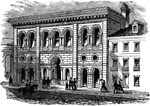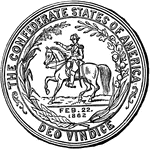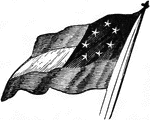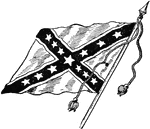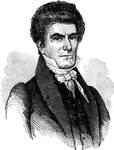
John Caldwell Calhoun
John Caldwell Calhoun (March 18, 1782 – March 31, 1850) was a leading United States Southern politician…
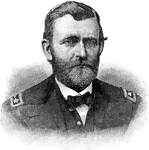
Ulysses S. Grant
Ulysses S. Grant, born Hiram Ulysses Grant (April 27, 1822 – July 23, 1885), was an American general…
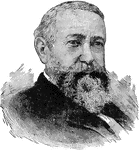
Benjamin Harrison
Benjamin Harrison (August 20, 1833 – March 13, 1901) was the twenty-third President of the United…
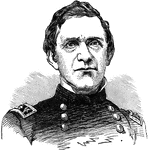
Edward Richard Sprigg Canby
Edward Richard Sprigg Canby (November 9, 1817 – April 11, 1873) was a career United States Army…

View at Cedar Creek Battle-ground
The Battle of Cedar Creek, or The Battle of Belle Grove, October 19, 1864, was one of the final, and…
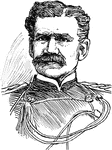
Adna Romanza Chaffee
Adna Romanza Chaffee was a General in the United States Army. Chaffee took part in the American Civil…

Ruins of Chancellorsville
The Battle of Chancellorsville was a major battle of the American Civil War, fought near the village…

Giuseppe Garibaldi
Giuseppe Garibaldi (July 4, 1807 - June 2, 1882) was an Italian military and political figure. In his…

Salmon Portland Chase
Salmon Portland Chase was an American politician and jurist in the Civil War era who served as U.S.…

Battle of Chickamauga
The Battle of Chickamauga, fought September 18-20, 1863, marked the end of a Union offensive in south-central…

Fort Lafayette
Fort Lafayette was an island coastal fortification in New York Harbor, built next to Fort Hamilton.…
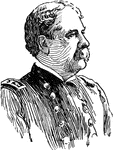
Charles Edgar Clark
Rear Admiral Charles Edgar Clark (10 August 1843 - 1 October 1922) was an officer in the United States…

Battle of Cold Harbor
The Battle of Cold Harbor, the final battle of Union Lt. Gen. Ulysses S. Grant's 1864 Overland Campaign…

Confederate Rosette and Badge
The Confederate rosette and badge was worn by supporters of the Southern Confederation.
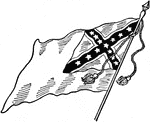
Confederate National Flag - No. 2
The second Confederate Flag adopted May 1, 1863, called the Confederate National Flag.
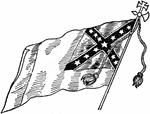
Confederate National Flag - No. 3
The third Confederate Flag adopted March 4, 1865, called the Confederate National Flag.
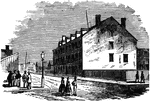
Castle Thunder
Castle Thunder, located in Richmond, Virginia, was a former tobacco warehouse located on Tobacco Row,…
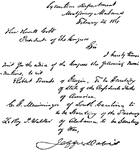
Jefferson Davis's First Message
Jefferson Davis', the President of the Confederate States of America, first message.

Cortez and the Ambassadors of Montezuma
On November 8, 1519, Cortez reached Tenochtitlan and was graciously received by Montezuma, the Aztec…
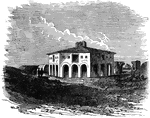
The Block-House in Craney Island, 1813
Craney Island is a point of land in the independent city of Portsmouth in the South Hampton Roads region…
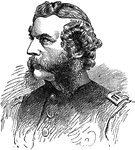
Samuel Wylie Crawford
Samuel Wylie Crawford (November 8, 1829 - November 3, 1892) was a United States Army surgeon and a Union…
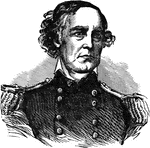
Samuel Ryan Curtis
Samuel Ryan Curtis (February 3, 1805 - December 26, 1866) was an American military officer, most famous…
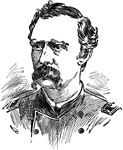
George Armstrong Custer
George Armstrong Custer (December 5, 1839 - June 25, 1876) was a United States Army officer and cavalry…
Hampton Court, 17th Century
Hampton Court Palace is a former royal palace in the London Borough of Richmond upon Thames, south west…
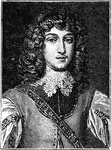
Prince Rupert of the Rhine
Rupert, Count Palatine of the Rhine, Duke of Bavaria, commonly called Prince Rupert of the Rhine, (17…
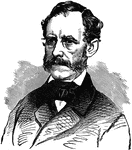
John Adolph Dahlgren
Rear Admiral John Adolphus Bernard Dahlgren, USN, (November 13, 1809 – July 12, 1870) merchant…
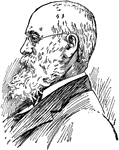
Charles Anderson Dana
Charles Anderson Dana (August 8, 1819 – October 17, 1897) was an American journalist, author,…
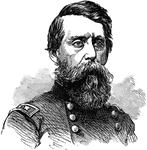
Jefferson C. Davis
Jefferson Columbus Davis (March 2, 1828 – November 30, 1879) was an officer in the United States…
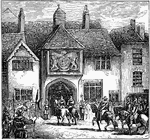
Fairfax Taking Possession of Cochester
In 1189, Colchester was granted its first Royal Charter by King Richard I (Richard the Lionheart.) In…
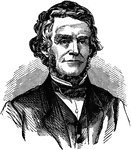
William Dennison
William Dennison, Jr. (November 23, 1815 – June 15, 1882) was a Whig and Republican politician from…
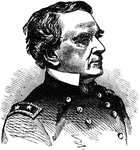
John Adams Dix
John Adams Dix (July 24, 1798 – April 21, 1879) was an American politician from New York. He served…

Fort Donelson
Fort Donelson and Fort Heiman, two sites of the American Civil War Forts Henry and Donelson Campaign,…
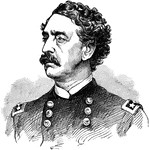
Abner Doubleday
Abner Doubleday (June 26, 1819 – January 26, 1893) was a career United States Army officer and…
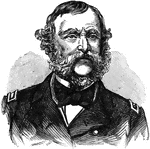
Samuel Francis Dupont
Samuel Francis Du Pont (September 27, 1803 – June 23, 1865) was an American naval officer who…
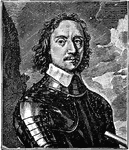
Oliver Cromwell
Oliver Cromwell (25 April 1599 Old Style– 3 September 1658 Old Style) was an English military…
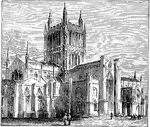
Hereford Cathedral
In the war between King and Parliament (the English Civil War) the city of Hereford fell into the hands…
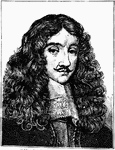
Charles II of England
Charles II (Charles Stuart; 29 May 1630 – 6 February 1685) was the King of England, Scotland,…

Port Eads
Port Eads, Louisiana, is located at the southern tip of the Mississippi River, also known as South Pass…
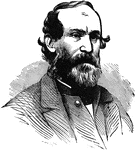
Jubal A. Early
Jubal Anderson Early (November 3, 1816 – March 2, 1894) was a lawyer and Confederate general in…
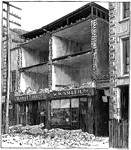
Results of the Earthquake in Charleston S.C., Aug. 31, 1886
On August 31, 1886, Charleston was nearly destroyed by an earthquake measuring 7.5 on the Richter scale…

Bishop Jeremy Taylor
Jeremy Taylor (1613 – 13 August 1667) was a clergyman in the Church of England who achieved fame…
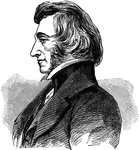
Charles Ellet
Charles Ellet, Jr. (1 January 1810 – 21 June 1862) was a civil engineer and a colonel during the…
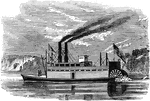
Ellet's Stern Wheel Ram
Charles Ellet, Jr. (1 January 1810 – 21 June 1862) was a civil engineer and a colonel during the…
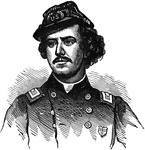
Ephraim Elmer Ellsworth
Elmer Ephraim Ellsworth (April 11, 1837 – May 24, 1861) was a lawyer and soldier, best known as…
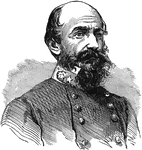
Richard Stoddert Ewell
Richard Stoddert Ewell (February 8, 1817 – January 25, 1872) was a career U.S. Army officer and…

Fair Oaks
The Battle of Seven Pines, also known as the Battle of Fair Oaks or Fair Oaks Station, took place on…
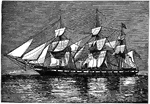
The Hartford, Farragut's Flagship
The Hartoford departed the Delaware Capes 28 January, 1862 as flagship of Flag Officer David…

John Buchanan Floyd
John Buchanan Floyd (June 1, 1806 – August 26, 1863), was a Virginia politician (legislator and governor),…
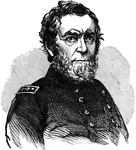
Andrew Hull Foote
Andrew Hull Foote (September 12, 1806 – June 26, 1863) was an admiral in the United States Navy…
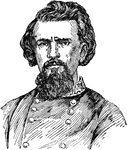
Nathan Bedford Forrest
Nathan Bedford Forrest (July 13, 1821 – October 29, 1877) was a lieutenant general in the Confederate…
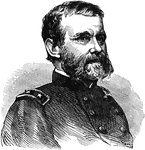
William Buel Franklin
William Buel Franklin (February 27, 1823 – March 8, 1903) was a career United States Army officer…

Battlefield of Franklin
The Second Battle of Franklin (more popularly known simply as The Battle of Franklin) was fought at…
